Microsoft Graph Utility Features
Creating Project in Azure Active Directory Admin Center
A Project is to be created on Azure Active Directory admin center for a user having MS Office account.
Steps to Create a Project in Azure Active Directory Admin Center
Following is a step by step tutorial for creating a project in Azure Active Directory admin center.
1. Go to Azure Active Directory and login using your MS Office credentials.
Azure Active Directory Link - https://aad.portal.azure.com/
2. Create an Azure AD Application in your tenant.
In the left side pane click the label Azure Active Directory. This will open up the blade for Azure Active Directory. In that screen should see a label App registrations. This is the starting point of a registering an Azure AD Application. This blade will allow you to create a new application for Azure AD.
Click on the button New registration to create a new application.
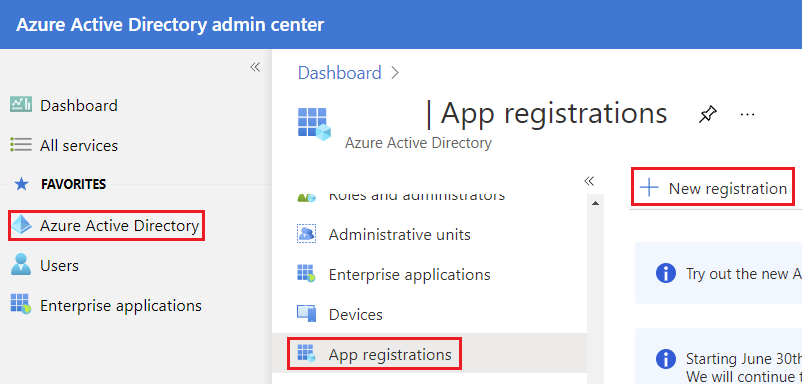
3. Now you will see the new application registration blade.
- Name This will be the name of your application.
- Supported account types This section will restrict the access.
Click Register button.
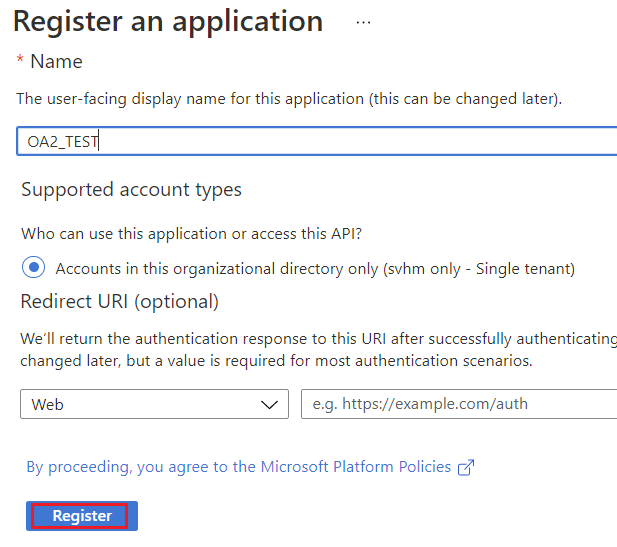
4. You should see the newly registered applications blade.
- Application (client) ID The id of your application.
- Directory (tenant) ID The Azure AD tenant id.
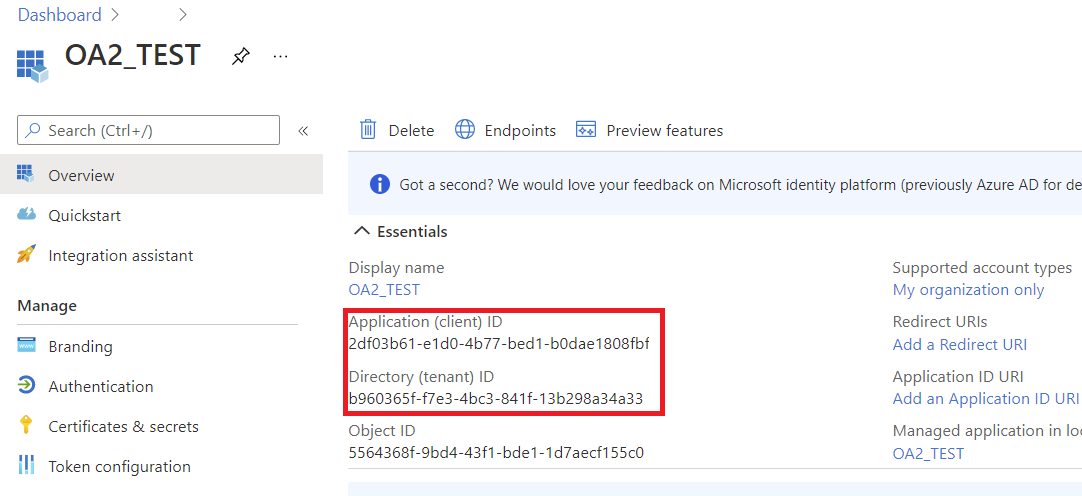
5. Allowing permissions for Microsoft Graph API.
Click on the API permissions label.
Azure has already given you User.Read delegated permissions for your application. This permission will allow us to read user information for a logged in user. These are Microsoft Graph API permissions, in other hand we can call them as Scopes.
The full list of scopes for Microsoft Graph API - https://docs.microsoft.com/en-us/graph/permissions-reference.
Click on + Add a permission button and select Microsoft Graph.
Click on Delegated permissions. Now you see a list of permissions available for Microsoft Graph API.
Select required permissions, click Add permissions button.
Click Grant admin consent button.
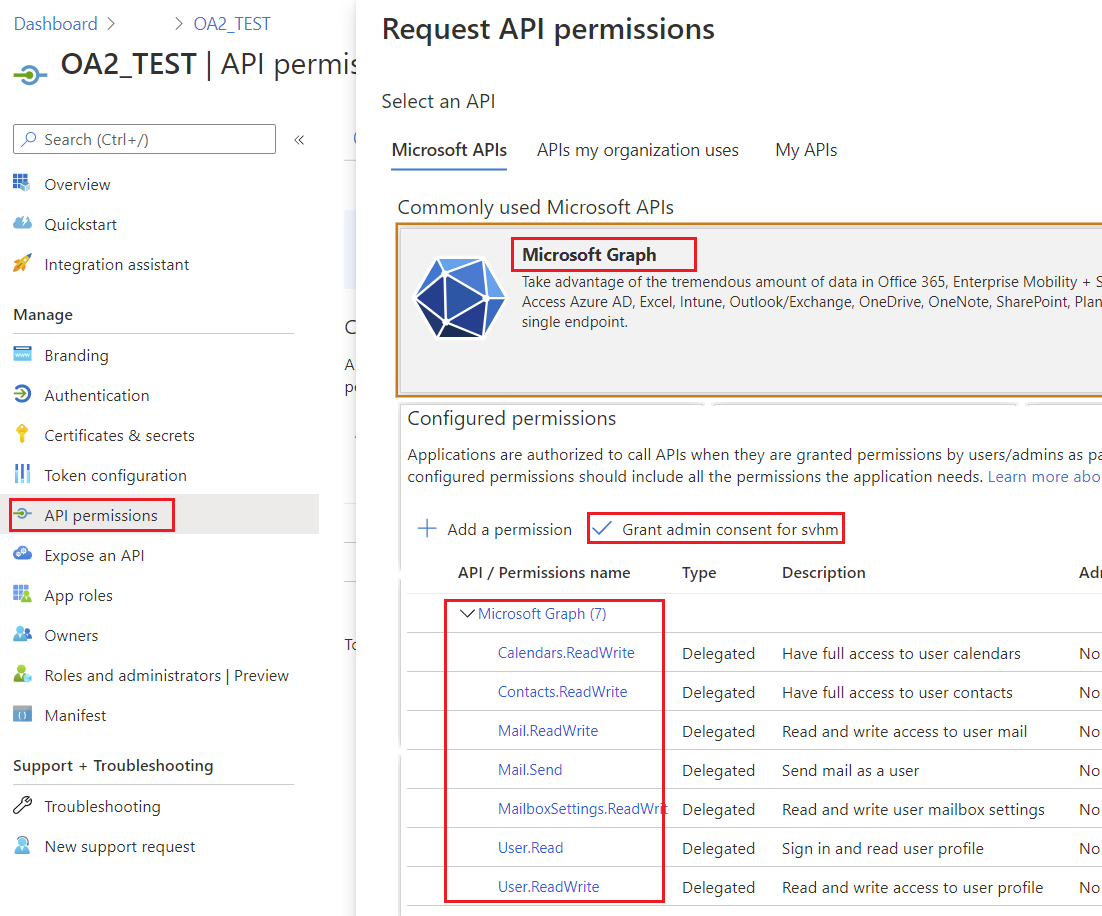
6. Allow public client flows.
Specifies whether the application is a public client. Appropriate for apps using token grant flows that don’t use a redirect URI.
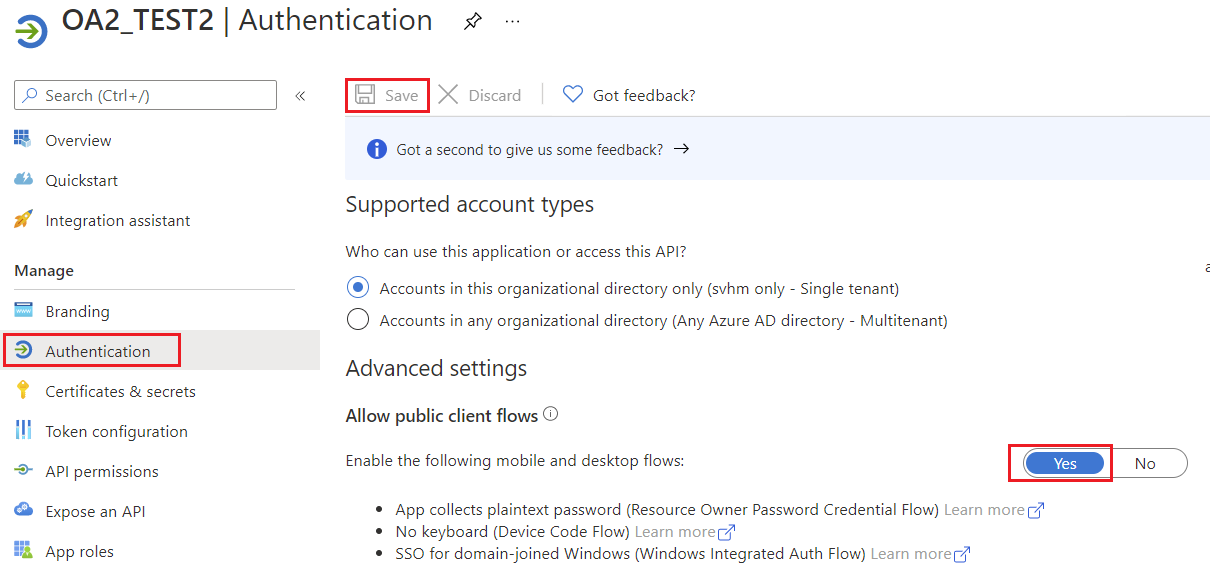
7. Create a key for the application

Helper Classes
Following helper classes are required to run the codes in this section. These classes are just for simplification of demonstration.
AzureROPCTokenProvider Class
An instance of the IGraphClient class handles building requests, sending them to the Microsoft Graph API, and processing the responses. To create a new instance of this class, you need to provide an instance of ITokenProvider, which can authenticate requests to Microsoft Graph.
import java.io.BufferedReader;
import java.io.IOException;
import java.io.InputStream;
import java.io.InputStreamReader;
import java.io.OutputStream;
import java.io.UnsupportedEncodingException;
import java.net.HttpURLConnection;
import java.net.URL;
import java.net.URLDecoder;
import java.net.URLEncoder;
import java.nio.charset.StandardCharsets;
import java.util.HashMap;
import java.util.Map;
/**
* <p>
* Azure resource owner password credential (ROPC) token provider
* https://docs.microsoft.com/en-us/azure/active-directory/develop/v2-oauth-ropc
* https://docs.microsoft.com/en-us/exchange/client-developer/exchange-web-services/how-to-authenticate-an-ews-application-by-using-oauth
* https://portal.azure.com
* https://developer.microsoft.com/en-us/graph/graph-explorer/#
* token parser https://jwt.io
* </p>
*/
class AzureROPCTokenProvider implements ITokenProvider {
private static final String GRANT_TYPE = "password";
private final String clientId;
private final String clientSecret;
private final String userName;
private final String password;
private final String tenant;
private final String scope;
private OAuthToken token;
public AzureROPCTokenProvider(String tenant, String clientId, String clientSecret,
String userName, String password, String[] scopeAr) {
this.tenant = tenant;
this.clientId = clientId;
this.clientSecret = clientSecret;
this.userName = userName;
this.password = password;
this.scope = joinToStr(scopeAr, " ");
}
public synchronized OAuthToken getAccessToken(boolean ignoreExistingToken) {
if (this.token != null && !this.token.getExpired() && !ignoreExistingToken)
return this.token;
token = null;
Map<String, String> tokenArgs = geToken();
java.util.Calendar c = java.util.Calendar.getInstance();
c.add(java.util.Calendar.SECOND, Integer.parseInt(tokenArgs.get("expires_in")));
token = new OAuthToken(tokenArgs.get("access_token"), TokenType.AccessToken, c.getTime());
return token;
}
public final OAuthToken getAccessToken() {
return getAccessToken(false);
}
public void dispose() {
}
private String getEncodedParameters() {
return "client_id=" + urlEncode(clientId) + "&scope=" + urlEncode(scope) + "&username=" + urlEncode(userName)
+ "&password=" + urlEncode(password) + "&grant_type="
+ urlEncode(GRANT_TYPE);
}
private String getUri() {
if (tenant == null || tenant.trim().isEmpty())
return "https://login.microsoftonline.com/common/oauth2/v2.0/token";
else
return "https://login.microsoftonline.com/" + tenant + "/oauth2/v2.0/token";
}
private Map<String, String> geToken() {
try {
HttpURLConnection connection = (HttpURLConnection) new URL(getUri()).openConnection();
connection.setRequestMethod("POST");
byte[] requestData = getEncodedParameters().getBytes(StandardCharsets.UTF_8);
connection.setUseCaches(false);
connection.setDoInput(true);
connection.setDoOutput(true);
connection.setRequestProperty("Content-Type", "application/x-www-form-urlencoded");
connection.setRequestProperty("Content-Length", "" + requestData.length);
final OutputStream st = connection.getOutputStream();
try {
st.write(requestData, 0, requestData.length);
} finally {
st.flush();
st.close();
}
connection.connect();
if (connection.getResponseCode() >= HttpURLConnection.HTTP_BAD_REQUEST) {
throw new IllegalAccessError("Operation failed: " + connection.getResponseCode() + "/" +
connection.getResponseMessage() + "\r\nDetails:\r\n{2}"
+ readInputStream(connection.getErrorStream()));
}
String responseText = readInputStream(connection.getInputStream());
Map<String, String> result = new HashMap<>();
String[] fromJsonToKeyValue = responseText.replace("{", "").replace("}", "")
.replace("\"", "").replace("\r", "")
.replace("\n", "").split(",");
for (String keyValue : fromJsonToKeyValue) {
String[] pair = keyValue.split(":");
String name = pair[0].trim().toLowerCase();
String value = urlDecode(pair[1].trim());
result.put(name, value);
}
return result;
} catch (IOException e) {
throw new IllegalAccessError(e.getMessage());
}
}
static String urlEncode(String value) {
try {
return URLEncoder.encode(value, StandardCharsets.UTF_8.toString());
} catch (UnsupportedEncodingException e) {
throw new IllegalAccessError(e.getMessage());
}
}
static String urlDecode(String value) {
try {
return URLDecoder.decode(value, StandardCharsets.UTF_8.toString());
} catch (UnsupportedEncodingException e) {
throw new IllegalAccessError(e.getMessage());
}
}
static String readInputStream(InputStream is) {
if (is == null)
return "";
BufferedReader reader = new BufferedReader(new InputStreamReader(is));
StringBuilder result = new StringBuilder();
String line;
try {
while ((line = reader.readLine()) != null) {
result.append(line);
}
} catch (IOException e) {
// ignore
}
return result.toString();
}
static String joinToStr(String[] arr, String sep) {
StringBuilder sb = new StringBuilder();
for (int i = 0; i < arr.length; i++) {
if (i > 0)
sb.append(sep);
sb.append(arr[i]);
}
return sb.toString();
}
}